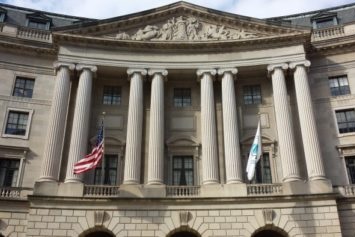In a Priority Open Recommendations document released by the Government Accountability Office (GAO) on May 28, 2024, the federal watchdog detailed 12 open high-priority recommendations the EPA has yet to address:

- To enhance the likelihood that total maximum daily loads (TMDLs) will support the nation’s waters’ attainment of water quality standards and to strengthen water quality management, the EPA’s administrator should develop and issue new regulations requiring that TMDLs include additional elements like comprehensive identification of impairment and plans to monitor water bodies to verify that water quality is improving. (Year of recommendation: 2014)
- The EPA’s administrator and the National Oceanic and Atmospheric Administration’s (NOAA) administrator, in collaboration with the members of the working group, should document and define what a national harmful algal bloom (HAB) and hypoxia program would entail, including identifying the program’s resource needs. (Year of recommendation: 2022)
- The EPA’s administrator and NOAA’s administrator, in collaboration with the members of the working group, should develop a national goal for the group focused on efforts to prevent HABs and hypoxia. (Year of recommendation: 2022)
- The EPA’s administrator, working with the other members of the working group, should develop an interagency framework, including prioritizing water bodies and identifying resource needs, to expand monitoring of freshwater HABs and hypoxia. (Year of recommendation: 2022)
- The EPA’s administrator, working with the other members of the working group, should develop an interagency framework, including prioritizing water bodies and identifying resource needs, to expand forecasting of freshwater HABs and hypoxia. (Year of recommendation: 2022)
- To improve the EPA’s ability to oversee the states’ implementation of the Safe Drinking Water Act (SDWA) and provide Congress and the public with more complete and accurate information on compliance, the EPA’s administrator should resume data verification audits to routinely evaluate the quality of selected drinking water data on health-based and monitoring violations that the states provide to the EPA. These audits should also evaluate the quality of data on the enforcement actions that states and other primacy agencies have taken to correct violations. (Year of recommendation: 2011)
- The assistant administrator for water of the EPA’s Office of Water and the assistant administrator of the EPA’s Office of Enforcement and Compliance Assurance should develop a statistical analysis that incorporates multiple factors, including those currently in the Safe Drinking Water Information System (SDWIS)/Fed and others, like the presence of lead pipes and the use of corrosion control, to identify water systems that might pose a higher likelihood of violating the Lead and Copper Rule once complete violations data is obtained, such as through SDWIS Prime. (Year of recommendation: 2017)
- The EPA’s assistant administrator for water should develop a strategic plan that meets the Water Infrastructure Improvements for the Nation (WIIN) Act requirement for providing targeted outreach, education, technical assistance, and risk communication to populations affected by the concentration of lead in public water systems and that’s fully consistent with leading practices for strategic plans. (Year of recommendation: 2021)
- The EPA’s director of water security, as chair of the Water Sector Government Coordinating Council, should work with the council to identify existing technical assistance providers and engage these providers in a network to help drinking water and wastewater utilities incorporate climate resilience into their projects and planning on an ongoing basis. (Year of recommendation: 2020)
- The assistant administrator of the EPA’s Office of Air and Radiation, in consultation with state and local agencies and other relevant federal agencies, should develop and make public an air quality monitoring modernization plan to better meet the additional information needs of air quality managers, researchers, and the public. Such a plan could address the ongoing challenges in modernizing the national ambient air quality monitoring system by considering leading practices, including establishing priorities and roles, assessing risks to success, identifying the resources needed to achieve goals, and measuring and evaluating progress. (Year of recommendation: 2021)
- The EPA’s administrator should develop and document a coordinated approach for the EPA’s actions to help communities prepare for and respond to the air quality and public health risks of wildfire smoke. The approach should align with leading practices for collaboration, including establishing goals, identifying and leveraging resources, and clarifying key stakeholder roles and responsibilities. (Year of recommendation: 2023)
- The EPA’s administrator should establish a process for conducting an organization-wide cybersecurity risk assessment. (Year of recommendation: 2019)
For more information about EPA progress and plans to address these items, see the Priority Open Recommendations document.
“Priority open recommendations are the GAO recommendations that warrant priority attention from heads of key departments or agencies because their implementation could save large amounts of money; improve congressional or executive branch decision-making on major issues; eliminate mismanagement, fraud, and abuse; or ensure that programs comply with laws and funds are legally spent, among other benefits,” according to the GAO website.